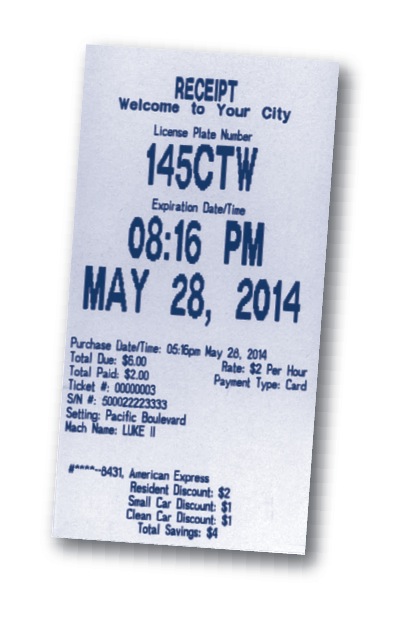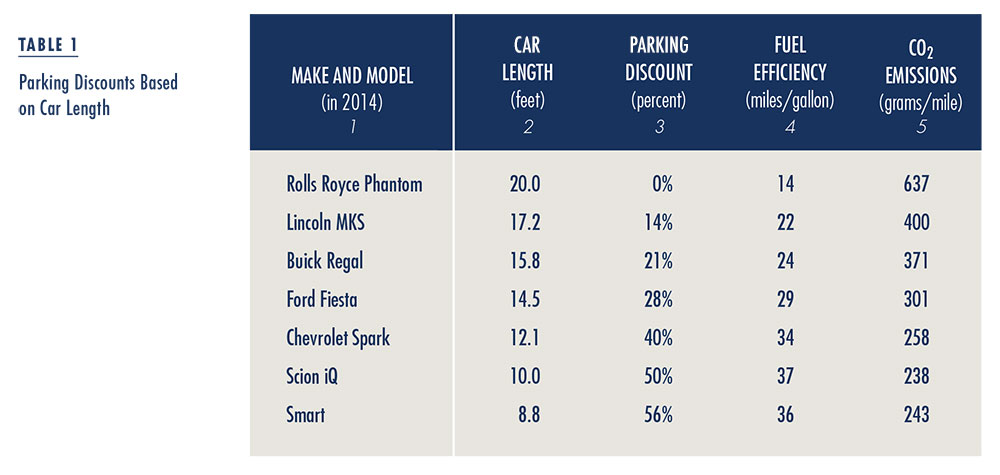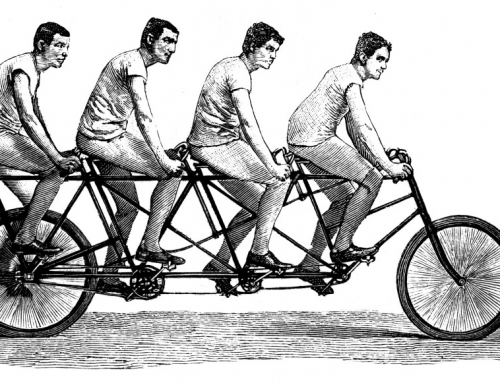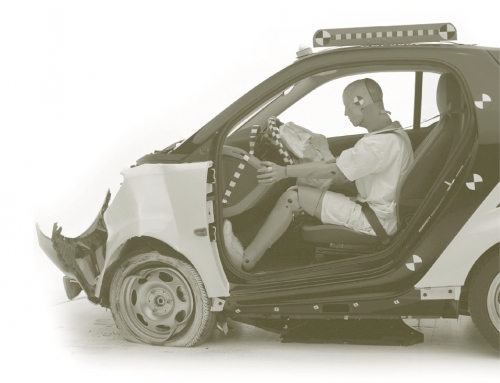[sharelines]Parking discounts for residents will produce less traffic, cleaner air, and a cooler planet.
Most people view parking meters as a necessary evil, or perhaps just evil. Meters can manage curb parking efficiently and provide public revenue, but they are a tough sell to voters. To change the politics of parking, cities can give price discounts at parking meters for their own residents.
Parking Discounts for Residents
In Miami Beach, residents pay only $1 an hour at meters where nonresidents pay $1.75 an hour. Some British cities give the first half hour at meters free to residents. Annapolis and Monterey give residents the first two hours free in municipal parking lots and garages.
Pay-by-license-plate technology enables the resident discounts.
Pay-by-license-plate technology enables the resident discounts. Drivers pay either by cell phone by entering their license plate number at a parking kiosk and paying with cash or credit card. Both the cell phones and the meters can automatically give discounts to all cars with license plates registered in a city. Cities link payment information to license plate numbers to show enforcement officers which cars have paid or not paid. Pay-by-plate is common in Europe, and several US cities, including Pittsburgh, now use it.
Like hotel taxes, parking meters with resident discounts can generate substantial local revenue without unduly burdening local voters. The price break for city plates should also please merchants because it will give residents a new incentive to shop locally. In big cities, the discounts can be limited to each neighborhood’s residents. More shopping closer to home can then reduce total vehicle travel in the region.
Resident parking discounts are justified because residents already pay taxes to maintain the streets and municipal garages in their city. The discounts are also justified because they can increase voter support for meters that are needed to manage the parking supply. Parking meters with resident discounts come close to the most popular way to raise public revenue: tax foreigners living abroad.
Parking Discounts for Smaller and Cleaner Cars
Cities can also use parking discounts to achieve economic and environmental goals. If a city classifies license plates by car length, it can give discounts for smaller cars that take up less curb space. Because smaller cars tend to be more fuel efficient, discounts for smaller cars will also reduce fuel consumption and CO2 emissions. Parking discounts based on car size will therefore produce local economic benefits and reduce global environmental costs.
Table 1 illustrates parking discounts based on car lengths. Column 1 shows a selection of cars, and Column 2 shows their lengths, ranging from 20 feet for a Rolls Royce down to 8.8 feet for a Smart car. The typical length of a marked on-street parking space is 20 feet, but pay-by-plate systems do not require marked spaces, so more small cars can fit on a block with unmarked curb parking. Column 3 illustrates the discount for each car based on its length. Because the Rolls Royce is 20 feet long, it pays the full price, while the 10-foot Scion receives a 50 percent discount. Two Scions pay the same as one Rolls, so the payment per foot of curb space is the same for both cars.
Parking discounts for shorter cars also favor higher fuel efficiency and lower CO2 emissions. Column 4 shows each car’s fuel efficiency, ranging from 14 miles per gallon for the Rolls up to 37 miles per gallon for the Scion. Finally, Column 5 shows each car’s CO2 emissions per mile. For example, the Ford emits less than half as much CO2 as the Rolls. If cities want to reduce CO2 emissions, they don’t have to wait for state or federal action before offering discounts for small cars. Each city can choose its own parking discounts according to its own priorities.
Will parking discounts for small cars be fair? The manufacturer’s suggested retail price starts at $474,990 for a 20-foot Rolls Royce Phantom and $13,270 for an 8.8-foot Smart car. In this case, it seems unfair not to offer parking discounts for smaller cars. Most people who can afford to buy a longer car can probably afford to pay more to park it.
Cities with serious air pollution can also give parking discounts for cars with low hydrocarbon or nitrogen oxide emissions. Parking meters in Madrid, for example, charge 20 percent less for clean cars and 20 percent more for dirty cars. Cities can give these discounts by linking license plate records to emissions data from car manufacturers or smog tests. According to the head of Madrid’s sustainability division, “We thought it would be fair if the cars that pollute more pay more, and compensate those who use more efficient vehicles.”
To manage curb parking efficiently, cities should charge the lowest meter price that will leave one or two open spaces on every block.
Cities may have to raise their pre-discount meter prices to prevent overcrowding the curb, but only nonresidents with the biggest and dirtiest cars will pay the pre-discount prices. To manage curb parking efficiently, cities should charge the lowest meter price that will leave one or two open spaces on every block. Residents will then gain two great advantages. First, they will easily find an open curb space wherever they want to park, and second, they will pay a discounted price when they do park.
Parking discounts may seem complicated, but few residents will be confused by or object to discounts automatically given at meters. The meters can even print the discounts on parking receipts to reinforce the rewards of shopping close to home and driving small, clean cars. The resident discounts will appeal to local voters and the other discounts will achieve public goals.
Prices are the most reliable way for cities to send signals about the behavior they want to encourage, and parking discounts can easily send these price signals. If meters give discounts for smaller and cleaner cars, more people will drive them.
Using the Meter Money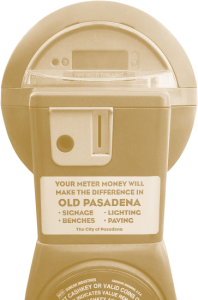
Cities can also increase political support for parking meters by using the meter revenue to improve local public services. Pasadena, for example, offers neighborhoods a package that includes both parking meters and additional public services financed by the meters. The meters not only manage curb parking but also provide a steady stream of revenue to pay for cleaning and repairing the sidewalks. The parking meters in Galveston and Ventura provide free public WiFi on the metered streets. People who live, work, shop, and own property in the metered neighborhoods can then see their meter money at work. With discounts for residents, locals will see that parking meters are working for them rather than against them.
A World of Good
Many cities suffer from congested curb parking, polluted air, poor public services, and political opposition to parking meters. To solve these problems cities can charge fair market prices for curb parking, spend the revenue to improve public services on the metered streets, and give price discounts for residents, small cars, and clean cars. By changing the politics of parking, cities can meter more of their valuable curb space, producing more money, less traffic, cleaner air, and a cooler planet. Parking meters can then do a world of good.
This article is adapted from “Change the politics of parking – offer resident discounts,” originally published in the San Francisco Chronicle.
Further Readings
Douglas Kolozsvari and Donald Shoup. 2003. “Turning Small Change into Big Changes,” ACCESS, 23: 2–7.
Miami Beach Resident Discounts
Pittsburgh Pay-by-Plate Meters
Data on fuel economy and carbon emissions are from fueleconomy.gov/
Data on length are from theautochannel.com/

